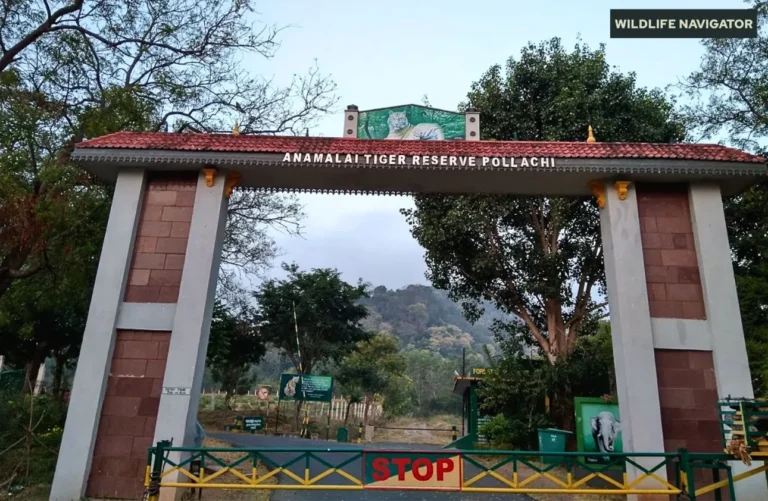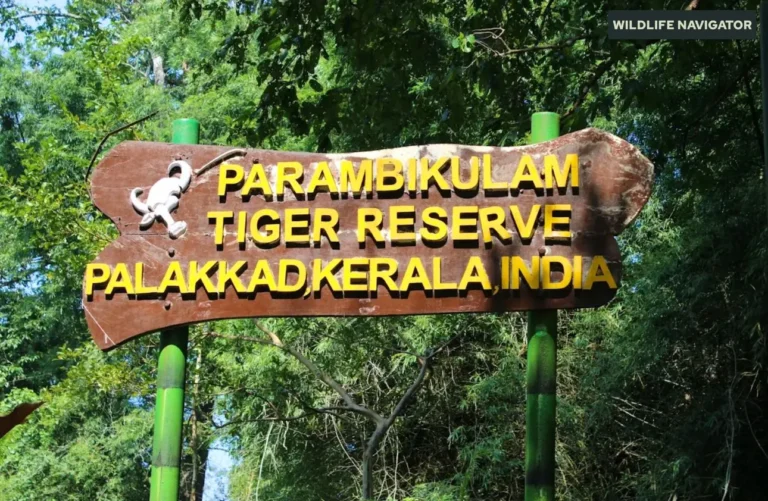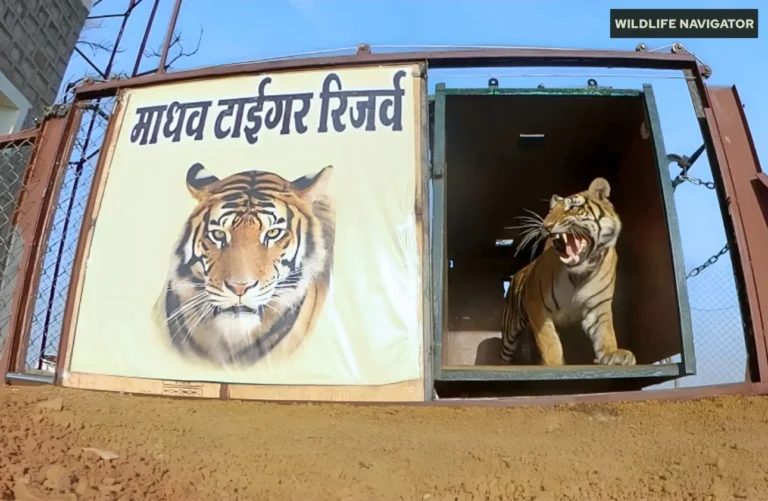Chandoli National Park – Wildlife, Trekking & Travel Guide

Chandoli National Park, located in the Satara district of Maharashtra, is one of the lesser-known yet ecologically rich protected areas of the Western Ghats. Spanning over 317 square kilometres, the park is part of a globally recognised biodiversity hotspot, supporting a wide range of flora and fauna, including several endemic and endangered species. Its undulating terrain, interspersed with dense forests, rivers, waterfalls, and rocky plateaus, makes it a captivating destination for nature enthusiasts, wildlife photographers, and trekkers alike.
The park’s forests are a mix of evergreen and dry deciduous vegetation, providing vital habitat for species like tigers, leopards, sloth bears, and Indian giant squirrels. Birdlife is equally remarkable, with hornbills, drongos, and several migratory species adding colour and sound to the landscape. Chandoli is not only a haven for wildlife but also plays a crucial role in preserving watersheds and river systems, including the Warna River, which supports both the local ecosystem and surrounding communities.
With its combination of scenic beauty, rich biodiversity, and opportunities for trekking and eco-tourism, Chandoli National Park offers a perfect escape for those looking to experience the Western Ghats in a relatively untouched natural setting. Whether it is spotting elusive wildlife, photographing waterfalls, or exploring quiet trails, the park presents an immersive experience for every visitor.
History, Geography & Landscape of Chandoli National Park
Historical Background
Chandoli was originally declared a wildlife sanctuary in 1985 and later upgraded to a national park in 2004 to strengthen protection for its diverse ecosystems and endangered wildlife. The region has historically been sparsely inhabited, with small tribal and rural communities practising agriculture and traditional forest-based livelihoods. Over time, conservation efforts have focused on preserving habitats for apex predators like tigers and leopards, while maintaining the ecological balance of the Western Ghats.
Geographical Setting and Terrain
Situated in the Sahyadri ranges of the Western Ghats, Chandoli National Park spans hilly terrain with elevations ranging from 600 to 900 meters above sea level. The park is drained by the Warna River and its tributaries, forming a network of streams and small waterfalls that sustain the forests throughout the year. Its topography is a mix of:
- Rolling hills and rocky ridges
- Deep valleys and riverine plains
- Plateaus and open grasslands
The Landscape: A Living Western Ghats Forest
Chandoli’s landscape features a dynamic combination of dense forests, grasslands, and water bodies. Its evergreen and semi-evergreen forests support a wealth of biodiversity, while the dry deciduous areas provide grazing grounds for herbivores like deer and gaurs. Seasonal variations bring unique experiences: the monsoon transforms the park into a vibrant green sanctuary, while winter and summer reveal different facets of wildlife activity. Natural attractions, including small waterfalls, riverbanks, and cliff viewpoints, make the park ideal for trekking, photography, and eco-tourism.
Flora and Fauna of Chandoli National Park
Flora: Diverse Forests of the Western Ghats
Chandoli National Park is a treasure trove of plant diversity, representing both evergreen and dry deciduous forest types. The park’s dense canopy provides shelter to countless plant species, while its open areas and grasslands support smaller shrubs and medicinal herbs. Key tree species include:
- Teak (Tectona grandis) – a dominant timber species
- Bamboo – vital for several wildlife species
- Jamun (Syzygium cumini) – produces fruit for birds and mammals
- Mango and Indian gooseberry (Amla) – common along riverbanks
- Rare medicinal and endemic plants that thrive in the Western Ghats’ unique climate
The seasonal changes bring dynamic colours to the park: monsoon showers transform the forests into lush green expanses, while autumn and winter reveal flowers and fruiting trees that sustain wildlife throughout the year.
Fauna: Sanctuary of Rare and Endangered Species
Chandoli provides habitat to a wide variety of wildlife, from apex predators to small mammals, birds, and reptiles. Notable species include:
- Mammals: Tigers, leopards, sloth bears, Indian giant squirrels, wild dogs, and several deer species
- Birds: Malabar pied hornbill, drongos, kingfishers, and migratory waterbirds
- Reptiles & Amphibians: King cobras, monitor lizards, endemic snakes, and diverse frog species
Highlight Species
Tigers and leopards are key predators, while hornbills and other birds play a crucial role in seed dispersal. The park’s varied habitats, from riverine forests to rocky plateaus, ensure a balanced ecosystem where flora and fauna coexist in natural harmony.
Safari Experience, Trekking & Entry Details
Chandoli National Park offers visitors a chance to explore its rich biodiversity and scenic landscapes through trekking, nature walks, and guided excursions. Unlike larger parks with organised jeep safaris, Chandoli emphasises eco-friendly exploration, allowing travellers to experience wildlife and forests up close while minimising human impact.
Trekking Experiences
The park has several trekking routes suitable for different levels:
- Warna River Trail: Easy to moderate, offering views of riverbanks and small waterfalls.
- Plateau Trek: Moderate difficulty, provides panoramic views of the surrounding hills.
- Forest Circuit Trek: Dense forest trail ideal for birdwatching and spotting herbivores.
Entry Permissions & Fees
Visitors require entry permits, available from the Chandoli forest office or online through the Maharashtra Forest Department portals. Approximate entry fees vary by visitor type (Indian or foreign) and activity (trekking, guided walks, or camping).
Timings & Regulations
- Park timings: 6:00 AM – 5:30 PM, depending on season.
- Visitors are advised to follow safety rules, avoid littering, and maintain a respectful distance from wildlife.
Safari Alternatives
While jeep safaris are limited, nature walks and eco-trails provide an immersive experience, especially for photographers and birdwatchers. Guided tours enhance safety and offer valuable insights into the park’s flora, fauna, and local conservation efforts.
Contact & Booking Information
- Forest Office Contact: Satara Forest Department
- Online Booking: Maharashtra Forest Department portal
Chandoli National Park’s focus on trekking and eco-friendly exploration makes it ideal for those seeking a more intimate and sustainable wildlife experience than conventional safari parks.
Best Time to Visit Chandoli National Park
Chandoli National Park can be visited year-round, but the experience varies significantly with the seasons due to changes in climate, wildlife activity, and accessibility. Choosing the right time depends on whether you want to focus on wildlife spotting, trekking, or enjoying scenic landscapes.
Winter (October – February)
Winter is considered the best season for exploring the park. The weather is cool and pleasant, making trekking and outdoor activities comfortable. Wildlife, including tigers, leopards, and deer, are more active during the day, increasing the chances of spotting them near water sources.
Monsoon (June – September)
The monsoon season transforms Chandoli into a lush green paradise, with waterfalls and streams at their fullest. This period is ideal for nature lovers and photographers seeking vibrant landscapes and dense foliage. However, heavy rains may make some trails slippery or inaccessible, so trekking can be challenging.
Summer (March – May)
Summer brings warmer temperatures and quieter trails, offering a peaceful experience with fewer visitors. Wildlife can be spotted near water bodies, but extreme heat may limit daytime activities.
Best Season Recommendation
For a balanced experience of wildlife, trekking, and scenic beauty, October to February (winter) is the ideal time to visit. Monsoon months are perfect for travellers who want to witness the park’s full greenery and flowing waterfalls.
How to Reach & Getting Around Chandoli National Park
Chandoli National Park is located in the Satara district of Maharashtra, forming part of the Western Ghats. Its accessibility by road, rail, and air makes it convenient for visitors from major cities like Pune, Mumbai, and Kolhapur.
Nearest Towns & Base Points
- Satara: Approximately 45 km from the park, serving as the main gateway.
- Kolhapur: Around 110 km away, with additional transport and accommodation options.
- Nearby villages and forest rest points provide local guidance for trekking and wildlife spotting.
By Air
- The Pune Airport is the nearest major airport (approx. 120 km).
- From Pune, visitors can hire taxis or take buses to Satara, then continue to the park via local transport.
By Train
- The Satara Railway Station is the closest railhead.
- Kolhapur Railway Station also provides connectivity for long-distance travellers.
- From these stations, buses, taxis, or private vehicles are available for the final leg to the park.
By Road
- Well-connected via State Highways and local roads, Chandoli can be reached by private car or bus.
- Roads from Satara and Kolhapur pass through scenic Western Ghats landscapes, enhancing the journey experience.
Getting Around the Park
- The park is best explored on foot through trekking trails and nature walks.
- Some areas allow guided jeep tours, though most wildlife exploration relies on walking paths to minimise disturbance.
- Local guides offer insights into flora, fauna, and conservation, making visits safer and more informative.
Chandoli’s combination of accessibility and eco-friendly movement ensures visitors can enjoy a full experience of the park’s wildlife, rivers, and forests.
Accommodation, Dining & Stay Options in Chandoli National Park
Visitors to Chandoli National Park have several options for staying close to nature, ranging from forest guesthouses to eco-friendly homestays, ensuring both comfort and an immersive wildlife experience.
Forest Guesthouses & Nature Camps
- The Maharashtra Forest Department operates a few guesthouses and nature camps near the park entrance.
- These facilities offer basic amenities and allow visitors to stay within proximity to trekking trails and wildlife zones.
- Staying here provides a unique opportunity to experience the forest environment at dawn and dusk, when wildlife is most active.
Homestays & Eco-Stays
- Several villages near the park offer homestays, providing a glimpse into local life and culture.
- Eco-stays focus on sustainable tourism, combining comfort with minimal environmental impact.
- Guests can enjoy home-cooked meals and participate in cultural or nature-based activities.
Resorts & Hotels
- For those seeking more modern amenities, nearby towns like Satara and Kolhapur have resorts and hotels ranging from budget to mid-range.
- These accommodations are suitable for travellers who prefer comfort while staying within a short drive to the park.
Nearby Dining Options
- Forest guesthouses and eco-stays may provide meals on-site, often highlighting local cuisine.
- In Satara and the surrounding areas, visitors can find restaurants and cafes offering a variety of Indian and regional dishes.
Whether you prefer immersive forest stays or nearby urban comforts, Chandoli offers options that cater to different tastes while keeping visitors close to its natural wonders.
Nearby Attractions, Culture & Suggested Itineraries
Chandoli National Park is surrounded by scenic landscapes, historic sites, and cultural landmarks, making it an ideal base for exploring both nature and heritage.
Natural Attractions
- Warna River and Waterfalls: Ideal for photography, birdwatching, and trekking.
- Rocky Plateaus & Viewpoints: Provide panoramic views of the Western Ghats.
- Forest Trails & Grasslands: Perfect for spotting herbivores and small mammals in their natural habitat.
Cultural & Heritage Sites
- Chandoli Fort: A historical landmark reflecting the region’s strategic significance.
- Nearby Temples: Local temples showcase traditional architecture and regional rituals.
- Village Life: Experience traditional farming, crafts, and cuisine in nearby settlements.
Adventure & Eco-Tourism Activities
- Trekking along forest trails and riverbanks.
- Birdwatching and wildlife photography guided by local experts.
- Camping in eco-friendly sites for an immersive experience.
Suggested Itineraries
- 1-Day Trip: Early morning trek to waterfalls, wildlife spotting, and a short cultural visit to nearby villages.
- 2-Day Trip: Full-day forest trek, photography sessions, river exploration, and overnight stay in a forest guesthouse or eco-stay.
- 3-Day Trip: Extended trekking across plateaus, multiple wildlife sightings, visits to forts and temples, plus a nature-focused exploration of rivers and waterfalls.
By combining wildlife, adventure, and culture, Chandoli National Park and its surroundings offer a complete experience for travellers seeking both relaxation and exploration.
Conservation & Importance of Chandoli National Park
Chandoli National Park plays a vital role in preserving the biodiversity and ecological balance of the Western Ghats, one of the world’s recognised biodiversity hotspots. Its forests, rivers, and grasslands provide critical habitat for several endangered and endemic species, including tigers, leopards, sloth bears, and hornbills. Protecting this area ensures the survival of these species while maintaining the region’s ecological integrity.
Ecological Significance
- Chandoli is part of the Western Ghats watershed system, supporting rivers such as the Warna and ensuring water availability for surrounding communities.
- The park helps prevent soil erosion, maintains air and water quality, and preserves diverse plant and animal life.
Role in Wildlife Conservation
- The park contributes to tiger and leopard conservation programs, including population monitoring and anti-poaching efforts.
- Habitat management ensures a balance between predator and prey species, sustaining the ecosystem naturally.
Global Recognition
- Being part of the Western Ghats, a UNESCO World Heritage Site, Chandoli holds international ecological importance.
- It is recognised for its role in conserving endemic species and rare plant communities.
Community & Eco-Tourism Initiatives
- Local communities participate in eco-tourism programs, guiding treks, managing homestays, and promoting sustainable practices.
- These initiatives benefit villagers economically while encouraging wildlife protection and awareness.
Challenges
- Threats such as habitat fragmentation, human-wildlife conflict, and illegal resource extraction remain ongoing challenges.
- Continuous conservation efforts, awareness campaigns, and responsible tourism are key to ensuring the park’s long-term survival.
Chandoli National Park exemplifies how protected areas can balance wildlife preservation with community engagement and eco-tourism, contributing to regional and global conservation efforts.
Conclusion
Chandoli National Park is a hidden gem of the Western Ghats, offering a blend of rich biodiversity, scenic landscapes, and cultural heritage. From dense forests and rolling hills to rivers, waterfalls, and wildlife, the park provides an immersive experience for trekkers, nature enthusiasts, and wildlife photographers alike.
Its significance goes beyond tourism, playing a crucial role in conserving endangered species, preserving watersheds, and supporting local communities. With eco-friendly trekking trails, guided nature walks, and nearby accommodations ranging from forest guesthouses to homestays, Chandoli ensures a sustainable way to experience the natural world.
Whether visiting in the lush monsoon season, the pleasant winter months, or the quieter summer period, Chandoli National Park promises a memorable journey into one of Maharashtra’s most remarkable natural landscapes.
FAQs about Chandoli National Park
1. What is the best time to visit Chandoli National Park?
- October to February (winter) is ideal for wildlife spotting and trekking. Monsoon (June–September) is best for waterfalls and greenery.
2. How can I get entry permits?
- Permits are available at the Chandoli Forest Department office or online via the Maharashtra Forest Department portal.
3. Are guided treks available?
- Yes, local guides offer trekking assistance, wildlife spotting, and nature tours for a safer and more informative experience.
4. Can visitors see tigers or leopards?
- These animals are elusive, but sightings are possible, especially near water sources. Trekking with a guide improves chances.
5. What are the accommodation options?
- Options include forest guesthouses, eco-stays, homestays, and resorts in nearby towns like Satara and Kolhapur.
6. Are there eco-tourism activities?
- Yes, activities include trekking, birdwatching, photography, camping, and cultural experiences in local villages.





